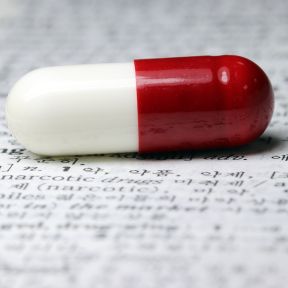KEY POINTS-
- The secondary effects of Ozempic, a new diabetes drug, and Wegovy, a new weight-loss drug, appear positive.
- Patients using the drugs have reported a decreased desire for tobacco, illicit drugs, and alcohol.
- This appears to support the idea that the basis of addictions is organic, i.e., an inherent trait.
Recent reports of the secondary effects of Ozempic, a new diabetes drug from Novo Nordisk, as well as its weight-loss drug Wegovy, can make one think that we should all be taking one of them. In reality, they are the same drug, but in different doses. Mounjaro, also known as Tirzepatide, produced by Eli Lilly, is another new weight-loss drug with similar characteristics. The subordinate benefits of these drugs appear to include diminishing cravings for alcohol, illicit drugs, and tobacco. These secondary benefits were investigated when Ozempic was being tested for diabetes, and many patients noticed that they lost weight, and others reported a new lack of interest in alcohol and tobacco as well. This led to inquiries into why this was happening.

The Science
Ozempic and Wegovy are semaglutides, medications which act in a similar way as the hormone glucagon-peptide-1 (GLP-1), found in humans. GLP-1 is released in the small intestine after eating and signals your brain that you are full. In this way, the gut influences the brain. Its action, however, lasts only minutes. During this time, it promotes stable blood sugar levels, delays gastric emptying, and diminishes appetite.
To be useful, the pharmaceutical industry had to find molecules that did the same thing. They were successful. The three drugs now on the market must be injected only once a week, an advantage over endogenous semaglutides. Mounjaro has an additional action to the other semaglutides: It targets both the GLP-1 and the GLP-1 receptor agonist. The GIP receptor also decreases appetite when activated.
Since patients reported a decreased desire for tobacco and alcohol, research as to why was initiated. Investigations in rodents and primates were performed first and established a decrease in the intake of alcohol and illicit drugs when a long-acting Glucagon-Like Peptide-1 Receptor antagonist was administered. More recently, a randomized controlled trial in humans regarding the effects of a GLP-1 receptor agonist in people living with alcoholism suggested that it could be a new treatment for human addiction disorders (Klausen et al., 2022).
Behavioral Compulsions and Substance Abuse
If these benefits prove to be substantiated, they may also be of interest in treating the underlying issues that drive some people to collect objects beyond normal limits, a type of behavioral compulsion. Currently, there is more media attention than scientific knowledge about this possibility.
In an earlier post, I considered the possibility that compulsive collecting could be considered a behavioral addiction that may share the neurobiological pathways activated in the brain by substance abuse: Both incorporate dopamine, which plays into our reward and reinforcement pathways. Similarly, both lead to the pruning of synapses in the prefrontal cortex, which can focus attention on cues related to the activity of choice or the preferred substance. In addition, substance abuse and compulsive behavior are associated with depression and anxiety.
If the preliminary studies that support Ozempic, Wegovy, and Mounjaro as drugs that have the potential to curb addictive disorders are substantiated, it will be yet another piece of evidence that the basis of addiction is organic, i.e., an inherent trait. Since behavioral compulsions appear to share qualities with substance addictions, a case could be made that the Ozempic/Wegony/Mounjaro story also applies to them, thereby suggesting that behavioral addictions are organic in nature as well.
In summary, this line of thinking would support the organic view of social behavior (n., Sam M.S., 2018). Perhaps we humans are not as much in control of ourselves as we would like to think we are.


